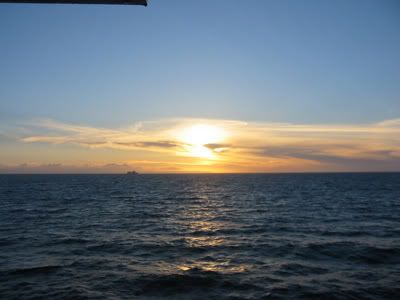The Visit by His Holiness the Dalai Lama to Glasgow 29th May to 1st June 2004
It has been a special Vesak for the city of Glasgow this year. At the invitation of Dharma Network Limited, His Holiness the Dalai Lama has agreed to hold 4 days of talks and lectures in the largest city of Scotland. In anticipation, Solus-Celebrating Glasgow, a festival of events and cultural performances throughout the city took place in the two weeks before his arrival.
I arrived to Glasgow in the afternoon of the 29th May. As I am unable to get the public talk tickets for the first day (which has been completely sold out), I decided to use this opportunity to explore the city of Glasgow a bit. The last time we were here, we only visited some of the main shopping streets. This time round I walked further south from the Buchanan Street Bus Station to George Square (below).
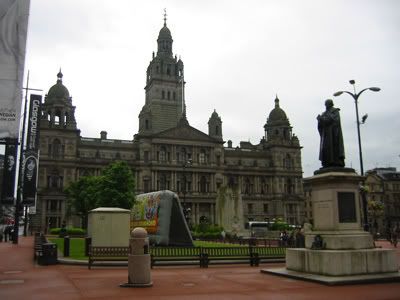
Eastwards from George Square is the Glasgow Cathedral, a relic from the past. Generally in Scotland, everything looks so old.
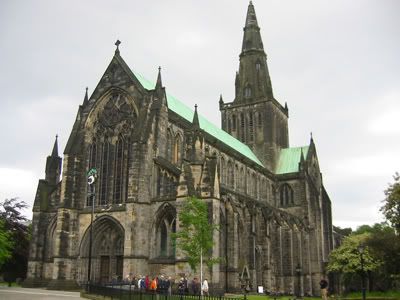
Just next to the cathedral across a bridge is the Glasgow Necropolis. It is actually the city cemetary built where tombstones surround the entire hill.
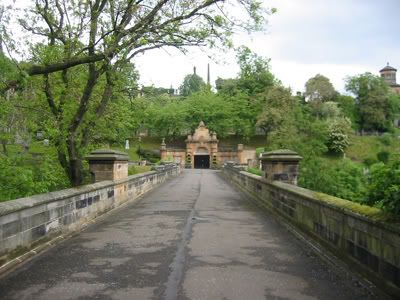
The cathedral as seen from the top of the Necropolis.
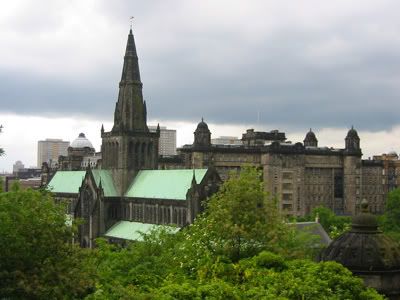
Just next to the Glasgow Cathedral is the St Mungo Museum of Religious Life. This museum dedicates itself to the main religions around the world - Buddhism, Christianity, Hinduism, Islam, Judaism, Sikhism. There is a Zen garden in the museum (see the cathedral at the background below)
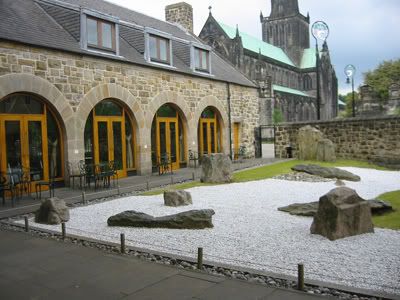
The 3-days' evenings were filled with rich cultural performances and events organized by Solus with the first night being the Song of Solus. ‘Solus’ means ‘light’ in Gaelic. It featured the ancient Celtic folklore, traditional Tibetan dance and drums as well as performances by contemporary artistes. This performance was held in a catholic church which greatly revealed the strong religious harmony of the populace.
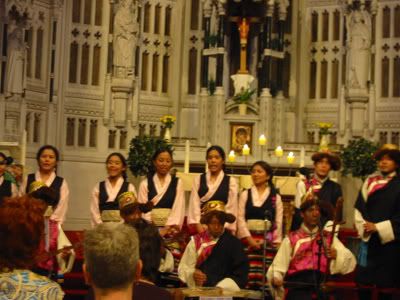
The Scottish Exhibition and Convention Centre (SECC), where the teachings were held was a half hour walk from the City Center. It had been a daily routine for me, a walk by the posh residential district of the River Clyde, the main river that runs through the heart of Glasgow. This was also the river where the Sand Mandela, painstakingly designed by the monks of Tashi Lhunpo monastery, was dismantled and scattered, symbolizing the impermanence of all things.
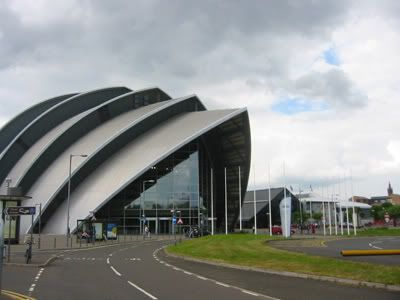
When the SECC was within sight, thousands of Tibetan prayer flags lined up the road to the halls. Large posters of His Holiness greeted the visitors as they entered the Main hall. In there, the large image of Shakyamuni Buddha became the focal attention of the audience. There was a solemn and harmonious feel to the design and layout of the hall. The monks from the Tashi Lhunpo monastery would then start off each session of His Holiness teachings with an hour of prayers and chants. It was filled to the stands with 9,000 audiences for the public talk on the first day, with tickets sold out within days it was released.
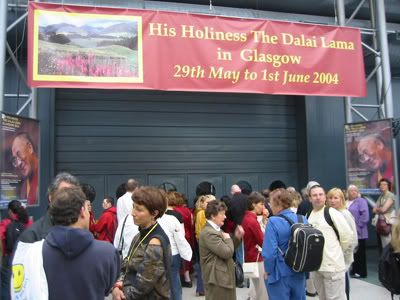
Over the course of the following three days, the Dalai Lama based his discourse on two classic Buddhist texts, Middle Stages of Meditation by the 8th century Indian master Kamalashila, and Thirty Seven Bodhisattva Practices, by the 14-century Tibetan lama Togme Sangpo. Acharya Kamalashila’s text is a comprehensive practice manual on how to cultivate compassion and wisdom and establish conductive conditions for meditative practice. The text by Togme Sangpo is a beautiful devotional poem in praise of the activities of bodhisattvas, those beings whose loving compassion inspires them to dedicate their lives to the service of others.
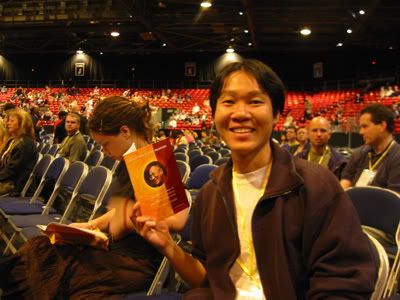
In his first teaching, he discoursed on the history of Tibetan Buddhism and how it traced its origin from the great Nalanda monastery of India. He emphasized meditation is the cultivation of familiarity in a practitioner and how it could transform his life for the better. Throughout his teachings, there had been substantial references to sutras which gave it a strong grounding. Frequent references had been made to science and philosophy and how it was applicable to modern times. At the end of each day, there were questions and answer session, he was asked about Buddhist concepts, meditation techniques, how Buddhism is applicable to Science and how we should approach conflicts in the world.
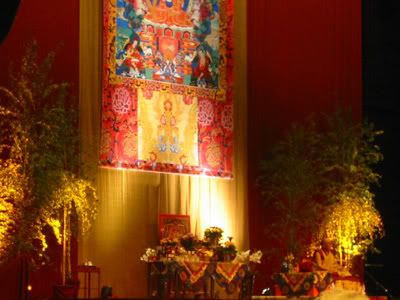
One of the question put to him was what advice would he give when a marriage breaks down, a query which sets the audience laughing when he answered “Wrong person to ask”. But he added that harmony should at least be maintained by the couple especially when there are children involved.
Next to the Main hall was a large Exhibition hall where Buddhist publications, Thangkas and relics were sold. The showcases were layered such that they resembled the exact nomadic culture of the Tibetans where partial tents were setup with a huge pyramid obelisk in the center supported by prayer flags from all sides. One differentiating aspect from local Buddhist exhibition was the vast amount of Tibetan showcase. It ranged from their musical instruments to the basic Tibetan culinaries and also the active awareness drive of the ‘Free Tibet’ movement.
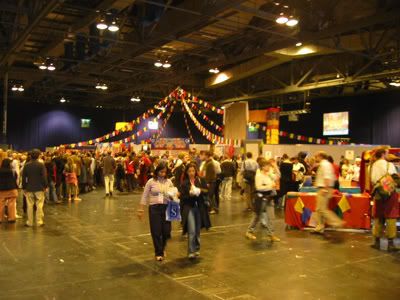
There are banners all around the city streets welcoming the Dalai Lama.
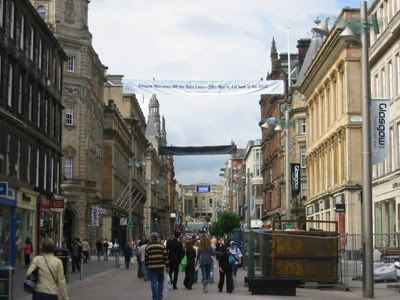
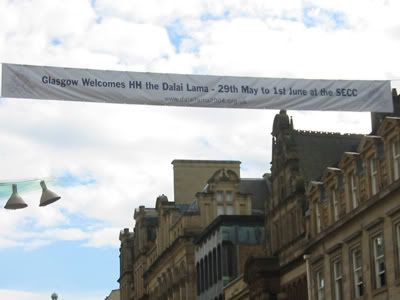
The second evening was wrapped up with the Peace Concert, held at Glasgow Royal Concert Hall where the theme centered on varied cultures from all over the world. A fusion of eastern orchestra with western symphony, supported by Indian and African drums kicked off the concert. Oriental, Tibetan snow lion, Indian and Greek dance were the main highlights of the night. The exhilarating dance performance by the children of Punjabi No. 1 in particular was received with strong cheers and support. At the end of the concert, the audience gave a standing ovation to the performers; they had indeed made this a memorable night.
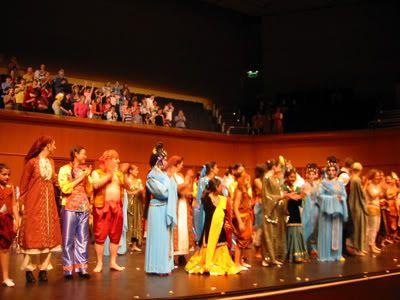
The Dalai Lama’s trip, which had been five years in the planning, had been welcomed by religious and political leaders in the United Kingdom. Half of the 8 days he spent in Britain was in the city of Glasgow where he discoursed on the Buddha Dharma. Though he is 68 this year, his resolve to bring peace for his people and the active propagation of the Buddha Dharma worldwide is commendable. His active reconciliation of Science and Buddhism over the decades had brought Buddhism to millions in the West. At the end of his teachings, his Holiness shared with us his greatest source of inspiration, found in the writings of the renowned eighth century Buddhist saint Shantideva:
For as long as space endures
And for as long as living beings remain,
Until then may I too abide
To dispel the misery of the world.
We too pray for his well-being.
Here is our lunch break below. Basking in the beautiful afternoon sun.
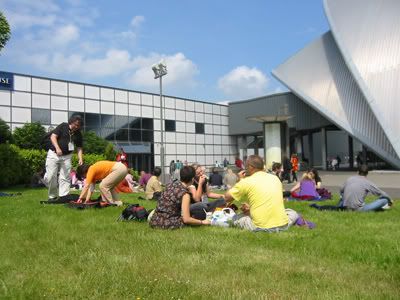
On the second last day, I decided to explore the western end of Glasgow city. The University of Glasgow is located at this part.
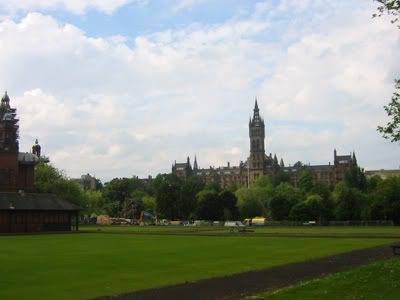
The picture below is the Buchanan Street Bus Station. As I made a mistake of not making accommodation bookings in advanced, thus I have to spend my first night at the bus station. It is awfully cold in these nights.
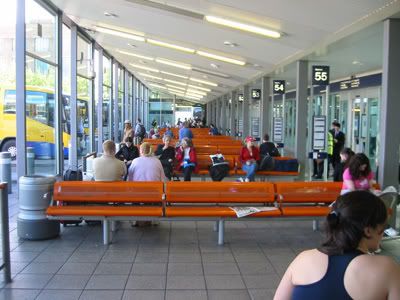
I decided to hop on the airport bus on the second and third night. It is much warmer in there and there are chairs where visitors can just hole up.
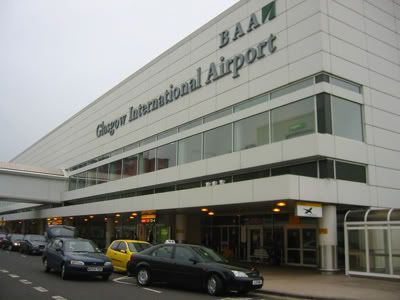
With television provided in some quarters.
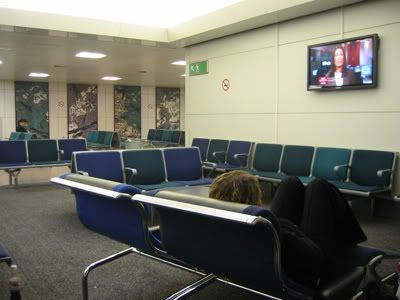
Here I am with Scotland's famous drink - Irn Blu.
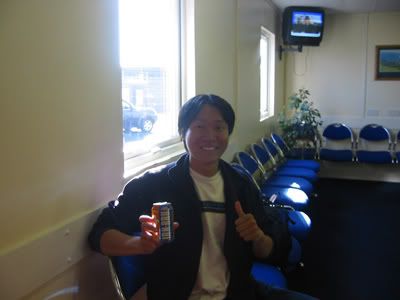
Finally on the last day, I took the Seacat back to Belfast.

The sunset on the northern seas of Ireland and Scotland.
